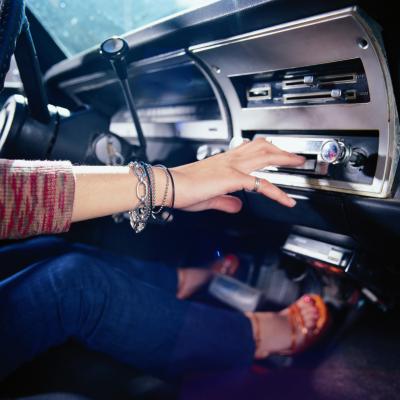Car radio sound will never be of the same quality as a CD or even compressed MP3 files. The reason is that car radios are susceptible to interference from environmental variables. It’s the nature of the beast and is inherent in the technology. In a fixed location, radios can be adjusted and interference eliminated to a certain extent. In a moving vehicle, static is much harder to control—although it can be marginally controlled.

Make sure your antenna is extended fully if it’s telescopic.

Keep bike racks and bikes off the roof of the car as much as possible. You may find it’s this extra steel that’s causing the static. You can troubleshoot this by removing the rack and bikes to see if the static becomes reduced.

Avoid using the AM band at night if the static becomes unbearable. Static at night on AM is caused by signals reflecting off the upper atmosphere. Radio stations close to each other on the band can interfere with each other. The plus side of AM and the atmosphere at night is that signals can travel long distances--as much as 1,000 miles. You will have to determine whether it’s worth it.

Re-scan if you experience static. On the FM band in cities, signal splitting, where a reflected signal and the main signal hit the radio at the same time is prevalent. Re-scanning can fix it sometimes.
Drive away from power lines if you experience static on the AM band.

Identify whether the static occurs at the same physical location and/or time of day. You may find a slight detour on your route can fix the problem.
